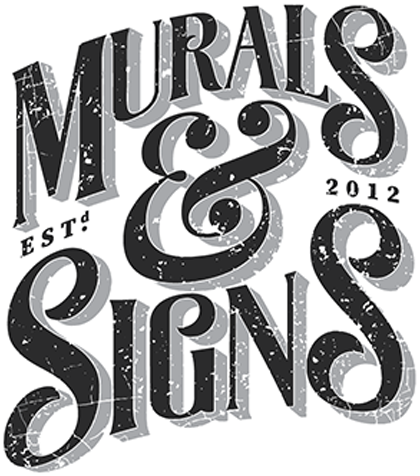Introduction
When it comes to pricing commercial mural projects, artists and businesses often face a crucial decision: whether to charge hourly rates or offer fixed pricing. Both approaches have their merits and considerations, and understanding the pros and cons of each is essential for making an informed choice. This article dives into the comparison between hourly rates and fixed pricing for commercial murals. From flexibility and transparency to project scope and client expectations, we’ll explore the factors that can guide your pricing strategy and help you stay competitive in a dynamic market.
Hourly Rates: Pros and Cons
Pros of Hourly Rates
Fair Compensation for Time and Skill
Charging hourly rates ensures that artists are compensated fairly for the time and effort invested in the project. This approach values expertise and skill, which can be especially beneficial for experienced artists who bring a high level of creativity to their work.
Flexibility for Variable Projects
Hourly rates provide flexibility for projects of varying complexity. More intricate designs or unpredictable challenges may require additional time and effort. Charging by the hour accommodates these fluctuations and ensures proper compensation.
Transparency for Clients
Hourly rates offer transparency to clients, as they can see exactly how their investment is being allocated. This transparency builds trust and demonstrates that the artist’s pricing is based on actual work time rather than arbitrary estimates.
Cons of Hourly Rates
Uncertainty for Clients
Hourly rates can create uncertainty for clients, as they might be concerned about the final cost. Without a fixed price, clients might worry that the project will exceed their budget, leading to hesitation in committing to the project.
Potential Misalignment
Hourly rates might not align with client expectations, particularly if they’re unfamiliar with the creative process. Clients might question why certain tasks take longer or shorter amounts of time, which could lead to misunderstandings.
Project Scope Creep
With hourly rates, there’s a risk of project scope creep, where the project takes longer than anticipated due to changes or revisions. This can result in higher costs for the client and potential frustration on both sides.
Fixed Pricing: Pros and Cons
Pros of Fixed Pricing
Clear Expectations
Fixed pricing provides clients with clear expectations regarding the project cost upfront. Clients can budget accordingly and avoid surprises, leading to a smoother negotiation and project initiation process.
Simplicity and Convenience
Fixed pricing simplifies the decision-making process for clients. They know the total cost without needing to calculate hourly rates or worry about time-related factors. This simplicity can make it easier for clients to commit to the project.
Scope Control
Fixed pricing encourages clear project scope definitions. Both parties agree on the scope of work before starting the project, reducing the likelihood of scope creep and misunderstandings down the line.
Cons of Fixed Pricing
Potential Underpayment
Fixed pricing might not accurately reflect the time and effort required for projects that are more intricate or complex. Artists could find themselves underpaid for projects that demand additional work beyond what was initially anticipated.
Limited Flexibility
Fixed pricing can limit flexibility for projects that require changes or revisions. Additional work might not be adequately compensated under a fixed price, leading to potential disputes or compromises.
Difficulty with Variability
Fixed pricing might not account for variations in project sizes or unforeseen challenges. This can make it challenging to create pricing structures that accommodate various projects and scenarios.
Finding the Right Approach
Consider the Project
Project Complexity
Evaluate the complexity of the project and its potential for scope changes. More complex projects might benefit from hourly rates to account for the unpredictability of the creative process.
Project Size
For larger projects, fixed pricing could provide clients with more predictable cost estimates. Smaller projects with well-defined scopes might also benefit from fixed pricing for its simplicity.
Know Your Clientele
Understand your target audience and their preferences. Some clients might appreciate the transparency of hourly rates, while others might prefer the convenience of fixed pricing.
Communication
Educate Clients
Clearly explain your pricing approach to clients and the reasoning behind it. Educated clients are more likely to feel comfortable and confident in their decision to work with you.
Flexibility Discussion
If you opt for fixed pricing, discuss the potential for adjustments if the project scope changes. This upfront communication ensures that both parties are on the same page regarding expectations.
Hybrid Approach
Consider a hybrid approach that combines elements of both hourly rates and fixed pricing. You could charge a fixed price for the main project and offer hourly rates for any additional work or revisions beyond the original scope.
Conclusion
Choosing between hourly rates and fixed pricing for commercial mural projects is a significant decision that involves balancing factors like transparency, flexibility, project scope, and client expectations. Both approaches have their advantages and challenges, and the right choice often depends on the unique dynamics of each project and the preferences of both the artist and the client. By carefully considering these factors and adopting a pricing strategy that aligns with your goals and values, you can confidently navigate the pricing landscape and offer a competitive and compelling pricing structure for your commercial mural painting services.
